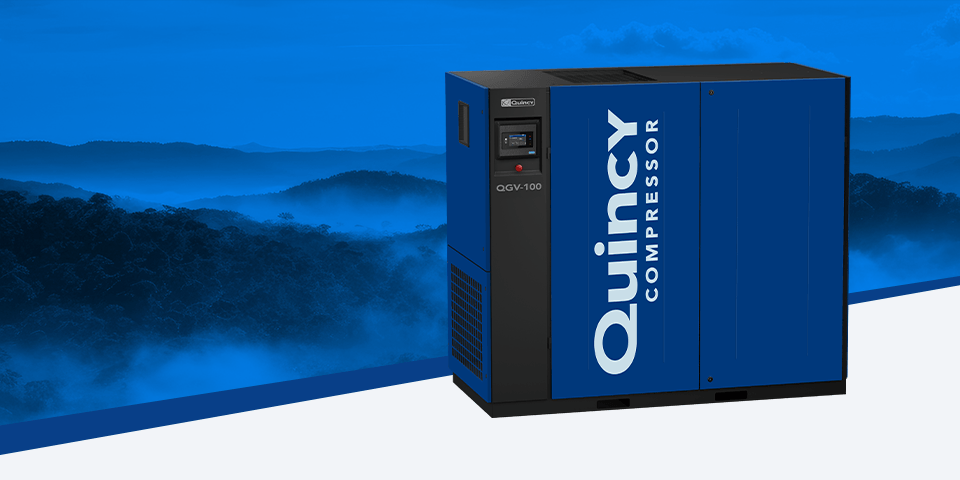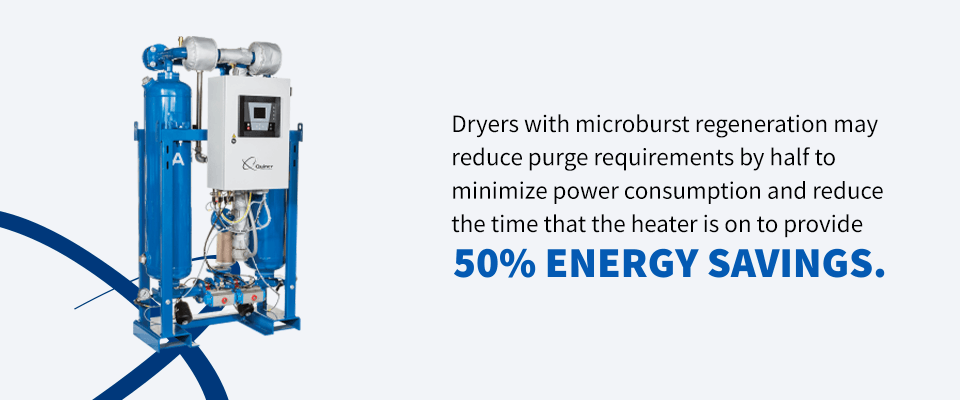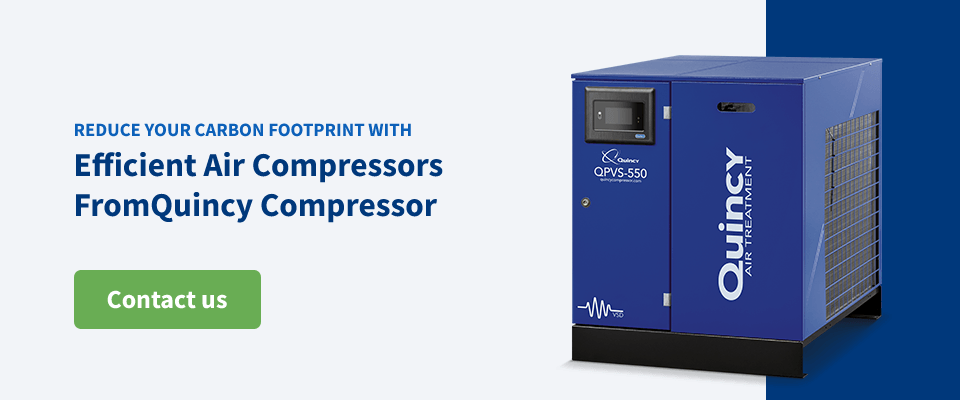
If you’re looking for new ways your company can help lower its environmental impact, your compressed air system is an area with various opportunities to reduce your carbon footprint, increase efficiency and minimize energy costs. Let’s explore how you can benefit from more energy-efficient air compressors and the essential steps you can take to reduce carbon emissions.
Benefits of Energy-Efficient Air Compressors
With just a few simple upgrades, you may gain various benefits and even more significant savings, especially when implemented into a larger facility. Here are some of the biggest benefits of technology that is either oil-free or reduces energy consumption to help you cause less harm to the environment.
Meet Government Emission Standards
When you try to reduce your carbon footprint with efficient air compressors, you have a better chance of meeting energy standards set by the Energy Policy and Conservation Act (EPCA). Many of the latest compressor technologies aim to promote efficiency and meet new environmental rules that the government requires compressors to comply with by Jan. 10, 2025.
Improved Air Quality
Many energy-efficient air compressors are available for oil-free use, and they are less likely to release harmful smoke and other waste gases. These aspects offer great opportunities to enhance workplace safety and employee well-being. Oil-free technology also reduces the chances of oil contamination that may damage products or slow production times.
Energy Savings
The biggest benefit of reducing your carbon footprint with efficient air compressors is that you save on energy costs in the long run. Newer technologies like variable speed compressors use less energy, have fewer performance issues and require less maintenance, making it a solution for high-production companies to lower operational costs. Carbon zero air compressors are also good alternatives because they have a net energy consumption of zero.
Higher Operational Efficiency
When you perform regular maintenance checks and replace parts with genuine spares to ensure system efficiency, you simultaneously consume less energy and allow the system to stay up and running for longer. This ensures that workers can stay efficient with their processes and ultimately improves customer satisfaction when there are fewer delays.
Longer-Lasting Air Compressors
While traditional air compressors may need frequent servicing and repairs, many modern variable-speed compressors can last longer without the need for maintenance. For example, some may only need maintenance every 100,000 hours of use. This lets you save on maintenance costs and efficiency within the facility.
How to Reduce the Carbon Emission of Your Air Compressor
Compressed air can be one of the largest energy consumers for companies, making it essential to find more environmentally friendly air compressors. These solutions may offer a great way for you to lower your organization’s environmental impact. There are various effective steps you can take to reduce your carbon footprint with air compressors when you have the correct parts and implement the appropriate practices.
1. Schedule an Air Audit
Your first step to reducing your carbon footprint is to schedule an energy or air audit to check whether you are using your system efficiently. Working with an experienced air audit specialist may help you understand what type of compressor will work best for your operations and if your current system requires any repairs or maintenance.
2. Automate Your Monitoring System
A great way to maintain your compressed air system’s efficiency and health is by automating system monitoring. This system will monitor the compressor for any issues, such as a clogged filter, and send an alert to the relevant people. This ensures you know when maintenance is required to keep the compressor in condition for operational efficiency.
3. Check Filters and Dryers for Clogs
Unable to automate system monitoring? You may benefit from creating a schedule to check your filters and dryers instead. You can examine the various pressure gauges to check for clogs, and doing so will allow your machine to operate at high performance, helping you improve energy savings.
4. Avoid Draining the Air
Do you have the essential system drains installed? Air compressors with zero-loss drains prevent the system from allowing air loss and decreasing efficiency. With these affordable and simple additions, companies can easily improve efficiency and reduce energy costs.
5. Install the Appropriate Piping
It’s important to install a piping system that can handle the airflow. Pipes made of steel, iron and other ferrous materials can often cause inefficiencies, drag and loss of energy. For example, cast iron pipes may rust over time when interacting with air and debris settling inside the pipes may decrease the space inside the pipe and lead to energy loss. Some equipment may even get contaminated and require frequent servicing. Aluminum piping may be a better solution because it helps reduce energy consumption and friction.
6. Upgrade to Energy-Efficient Technology
The best thing you can do to reduce carbon emissions is to choose a more energy-efficient air compressor to influence a healthier environment while reducing energy costs. One example of this includes an air compressor with variable speed drive (VSD) technology. This solution offers speed adjustability for less power consumption, superior efficiency and more consistent pressure in larger facilities.
Air Compressor System Parts That Impact Efficient Energy Management
Now that we know how to improve the efficiency of your air compressor, let’s talk about the different components you can add to your system to help make it happen. Here are five beneficial system parts to assist you in reducing your system’s environmental impact:
- Variable speed compressors: Variable speed compressors include a VSD to help ensure the compressor speed output automatically matches the demand, helping you generate 35% energy savings and reduce power consumption.
- Air system piping: Ensure you use aluminum piping with polymer fittings to reduce rust and pressure drops and eliminate leaks. This will help produce consistent pressure and reduce energy consumption.
- Microburst regeneration: If you’re looking for significant reductions, dryers with microburst regeneration may reduce purge requirements by half to minimize power consumption and reduce the time that the heater is on to provide 50% energy savings.
- No-air-loss demand drains: You can gain significant annual energy savings with these drains because they only operate when condensation fills the reservoir and help prevent air loss before it occurs.
- Variable capacity control: Do you consistently require a 50%-100% operational flow? Variable capacity control allows you more energy efficiency during these times and enables you to decrease the airflow output when necessary.
Reduce Your Carbon Footprint With Efficient Air Compressors From Quincy Compressor
Energy-efficient air compressors are the way forward if you want to ensure your system consumes less energy and that your company complies with government rules. Getting your key energy-efficient compressor parts with Quincy Compressor is a valuable first step to get there.
Our experts at Quincy Compressors offer various components, from quality variable speed compressors and no-air-loss drains to aluminum system piping and variable capacity control. To reduce your carbon footprint, contact our experts for more information about our efficient air compressors today.



